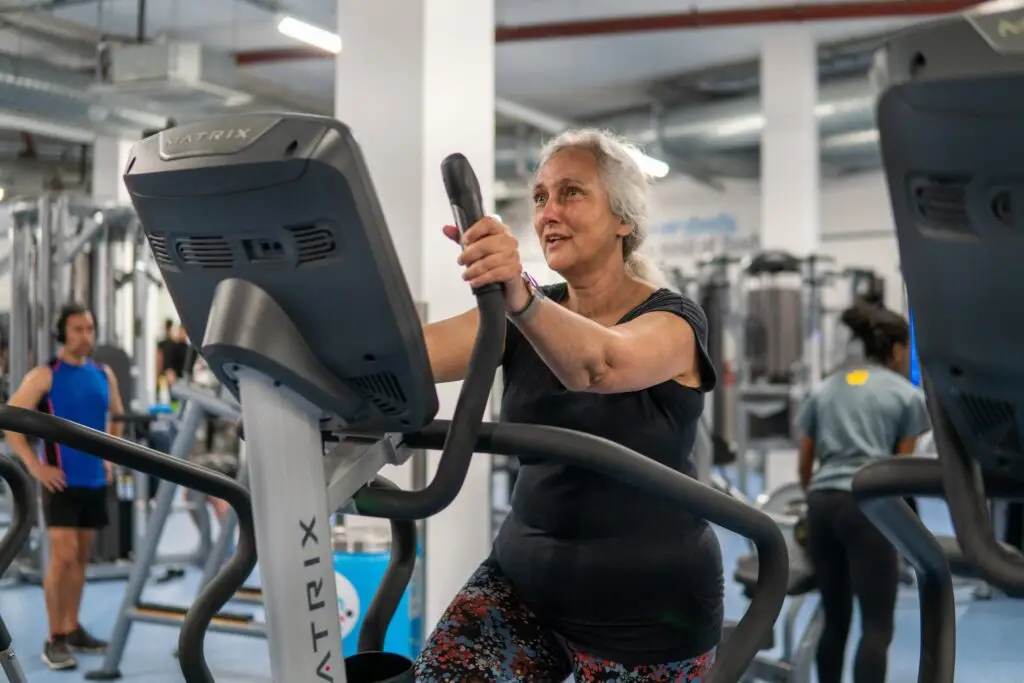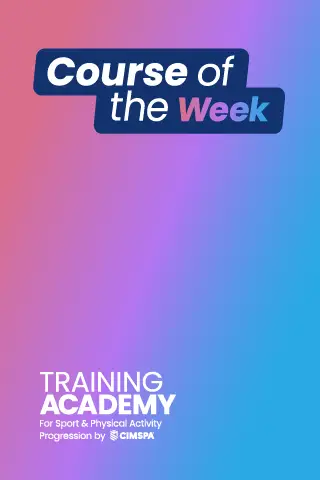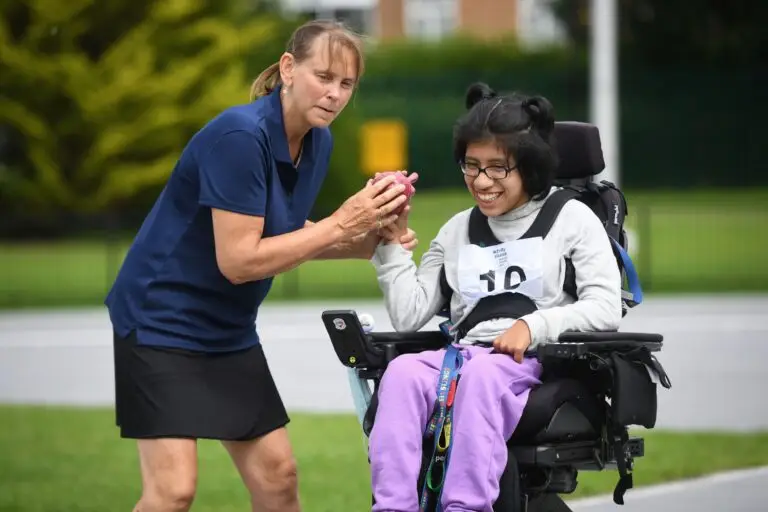Ageing well – working with older adults
With an ageing population the UK faces an increasing challenge to help people ‘age well’ and a key part of this is supporting their mental and physical wellbeing. Here we explore the ways that sector professionals can contribute to making activity accessible to older adults.

As a sport, physical activity and active wellbeing professional, you can play a crucial role in promoting healthy ageing and supporting older adults in maintaining their health, mobility and independence.
While genetics influence ageing, lifestyle choices, and particularly physical activity, can significantly improve our quality of life as we get older. By providing tailored activity programmes, education and motivation, you can help older adults to stay active and engaged in their wellbeing.
Ageing leads to a natural decline in muscle strength, balance and flexibility, increasing the risk of falls and injuries. It is estimated that about 30% of people aged 65 and above living at home, and about 50% of people aged 80 and above living at home or in residential care, will experience an episode of falling at least once a year. Falls cost the NHS over £2 billion each year.
Falls are the largest cause of emergency hospital admissions for older people and significantly impact long-term outcomes, often resulting in moves from independent living to long-term care facilities.
Activity professionals can design personalised activity and exercise plans that include strength training, balance improvement and mobility exercises to help older participants maintain independence and reduce fall risk.
According to the 2021 Health Survey for England, only 17% of adults aged 65 and over meet the muscle-strengthening guideline, and just 15% meet both muscle-strengthening and balance guidelines. This highlights the need for targeted interventions to prevent falls and maintain mobility.

Balance and stability exercises such as Tai Chi and yoga can significantly reduce fall risk by improving coordination, posture and lower-body strength. Research shows that incorporating strength training alongside balance-focused activities can enhance reaction times and joint stability, reducing the likelihood of falls.
Heart disease also remains a major concern for older adults. Encouraging participation in low-impact activities such as walking, cycling and swimming can improve cardiovascular health, lower blood pressure and enhance circulation. In the UK, swimming is the most popular activity among adults over 65 (38%), followed by fitness or gym sessions (29%) and cycling (21%).
As we know, physical activity is a powerful tool for improving mood and cognitive function. Professionals can incorporate exercise programmes that boost endorphin release, reduce stress and enhance sleep quality. Activities that involve coordination and problem-solving, such as dance or group exercise classes, can help prevent cognitive decline and promote mental agility.
Older adults often face metabolic changes that make weight management more challenging. Tailored exercise programmes can help regulate weight and manage conditions like diabetes, arthritis and osteoporosis. Strength training is essential for preserving bone density and muscle mass, reducing the risk of fractures.
While true of all age groups, social interaction is a key factor in mental and emotional wellbeing of older adults and important to consider when planning activity programmes. Creating a sense of community through group classes, walking clubs and other activities where there are opportunities to chat can help to combat loneliness and increase motivation.

An activity programme for older adults could include things like:
- aerobic exercise e.g. walking, swimming, cycling, or dancing to improve cardiovascular health
- strength training using resistance bands, free weights or bodyweight exercises to maintain muscle strength and bone density
- balance and stability exercises based on yoga, Tai Chi or specific balance activity to reduce the risk of falls
- flexibility and mobility training incorporating stretching routines to enhance joint function and prevent stiffness.
Top tips for practitioners working with older adults
- Conduct thorough assessments for each client. Evaluate their mobility, balance, strength and cardiovascular health before designing a programme.
- Adapt exercises to suit each client. Consider their limitations, medical conditions and personal goals when structuring workouts.
- Educate clients on safe techniques based on their own body. Demonstrate proper form and modify exercises to prevent injury.
- Encourage gradual progression. Start with manageable intensities and gradually increase difficulty to build confidence and capability.
- Promote consistency and enjoyment. Help your clients to find activities they enjoy to ensure long-term engagement.
Whatever your role, CIMSPA Education Partners offer a great selection of professional development to support you in building your skills and knowledge to enable you to engage and support older clients.
Here’s a small selection of opportunities that will build your confidence and your professional status:
- Older Adults and Exercise by Fitpro. 3 CPD points
- Postural Stability Instructor (PSI). Exercise for the Prevention of Falls and Injuries in Frailer Older People by Later Life Training – 10 CPD points
- YMCA Level 3 Award in Adapting Exercise for Independently Active, Older People by Platinum Training Institute. 10 CPD points
- Physical Activity for Older Adults by Future Fit Training. 3 CPD points
- Training Older Adults by Fitness Education Online. 10 CPD points
Sport, physical activity and active wellbeing professionals are in a unique position to support older adults in ageing well through structured, safe and enjoyable activity programmes.
By focusing on mobility, strength, cardiovascular health and social engagement, you can help clients maintain independence, prevent disease and improve their overall wellbeing and happiness.
Through education, motivation and expert guidance, you can make a lasting impact on their journey to healthy ageing.
Image credits: Elliott Manches, In-Press Photography, Ageing-better.org.uk








